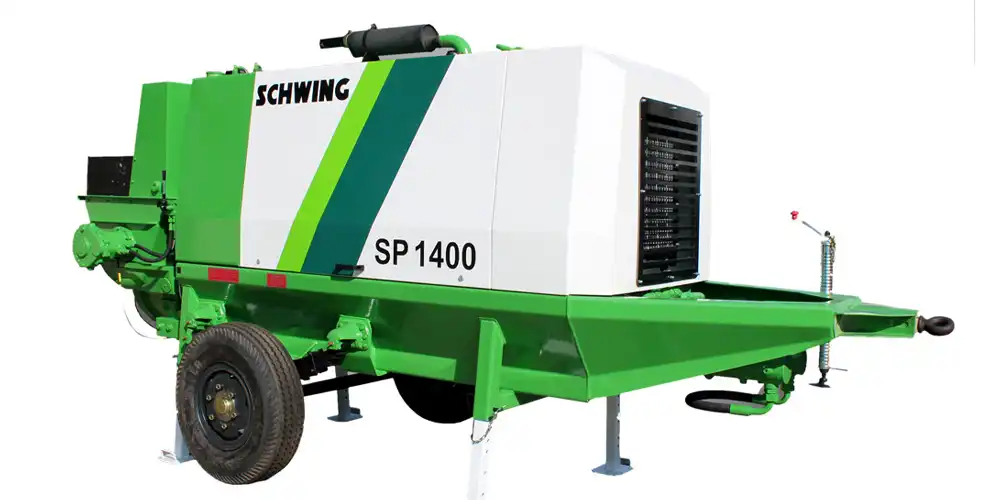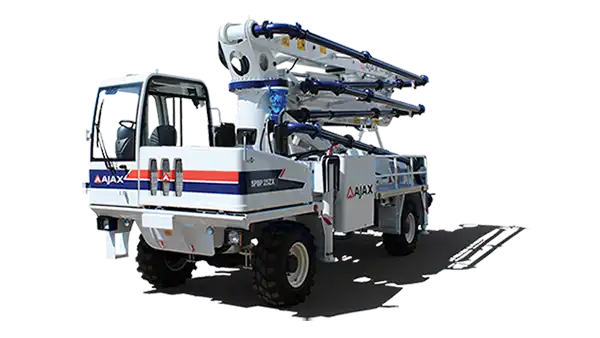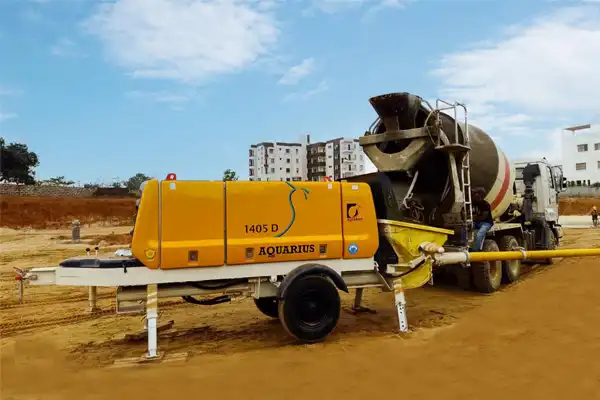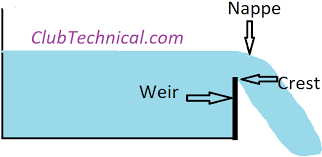Different Types of Concrete Pump
Different Types of Concrete Pump
Concrete pumping has become one of the most widely used approaches to place concrete. With the increasing use of pumping to place concrete, the development and refinement of the practice to ensure successful concrete pumping is becoming an important need for the concrete construction industry. Pumping enables the transport of concrete to forms and molds while increasing the speed of delivery and allowing access to hard-to-reach areas. Concrete pumps are likely to vary according to the end-use industry and quality of the concrete required for construction activities. Consequently, the optimization and development of prediction methods for concrete pumping is becoming a crucial issue for the concrete industry. Discussed below are different types of concrete pumps being used across projects.
Stationary Concrete Pump
The stationary concrete pump is small, light and features a powerful dual-piston pump. It is used for manual, not synchronised additives adding shotcrete and fine concrete. The high diameter cylinder ensures the specified maximum output in the lowest possible strokes per minute, thereby reducing the wear & tear of the pumping system substantially. This pump has a smaller towing length for better manoeuvrability in narrow areas. Equipped with latest S-valve technology (only one side wear and tear) and with highly wear resistant steel components. It has 50–80% more life and reduced towing length for better use in narrow areas. Electro hydraulic control elements are designed and installed for easy access and replacement when necessary to change the parts. Also all the electrical parts aree- asily accessible by opening the control panel lids. Users continue their work quickly on simple faults by changing the necessary part easier rather than changing the integrated unit.

Trailer Mounted Concrete Pump
These pumps for almost any application, from pressure grouting and shotcreting to placing cement-based overlays and structural concrete. It is used for manual, not synchronised additive adding shotcrete and fine concrete up to a grain size of 16 mm. With a delivery pressure of up to 68 bar and an output of 18 m³/h, it is a real power pump, despite its small dimensions and low weight. The latest models comes mounted on a single axle or multi-axle trailer and high pressure is used to pump the concrete. These trailers are transported to construction sites by attaching them to a suitable vehicle. These are also called stationary or line or static concrete pumps.

Truck Mounted Boom Concrete Pump
Latest boom pumps feature the robust yet lightweight EZ Clean which is engineered for performance and durability. For added safety, the hopper incorporates an RFID safety switch, preventing it from operating with the grate open and incorporating zero moving parts. There are optional features like pump kits, Concrete stop valves and Automatic lighting systems. With the deck-mounted side pipe rack and large fold-up side panels now standard, these pumps allow for plenty of space and provide a quick, convenient and clean way to store everything that’s required for your project. The latest models use Ergonomic Pump System (EPS), which optimises the pump and other functions. Integral to EPS, Ergonomic Output Control (EOC) reduces fuel consumption, wear and noise, adjusting the engine speed to the delivery rate. They are set up easily in low overhead clearance conditions. These are used for large projects especially where you need to place concrete in hard-to-reach locations.

Truck Mounted Boom Static Pump
Modern truck-mounted static pumps are equipped with a carrying capacity of the 100-meter delivery pipeline, an integrated water tank for high-pressure cleaning and a provision for air compressor and pressurised air tank for cleaning of the pipelines These pumps are also much smaller and more compact than their boom pump counterparts, making them much easier to transport and maneuver around a job site. They are also equipped with a water tank and a flushing water pump. Because of its flexibility and lower-volume capacity, you will more commonly use a concrete line pump for pouring concrete on smaller residential jobs, like building a swimming pool or repaving a driveway.

Truck Mixer Concrete Pump
The robust design and the completely hydraulic mechanical drive of the truck mixer concrete pump guarantee a low – maintenance operation. It can also be equipped and tailored to the individual needs of our customers, with the chassis of your choice and the pump size and mixing drum capacity. It is used in places where truck-mounted concrete pumps are too big and inflexible. It is the ideal equipment for interior refurbishing work. The torsion-resistant, integral frame reduces wear, cuts costs, and ensures stability, especially during the pumping operation. The different configurations of the booms on truck mixer pumps ensure the greatest operative versatility and enable it to reach almost any part of the construction yard, even those accessible with the most difficulty.





Fine
ReplyDelete